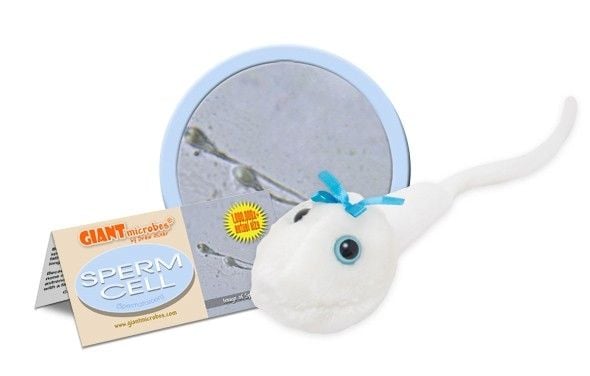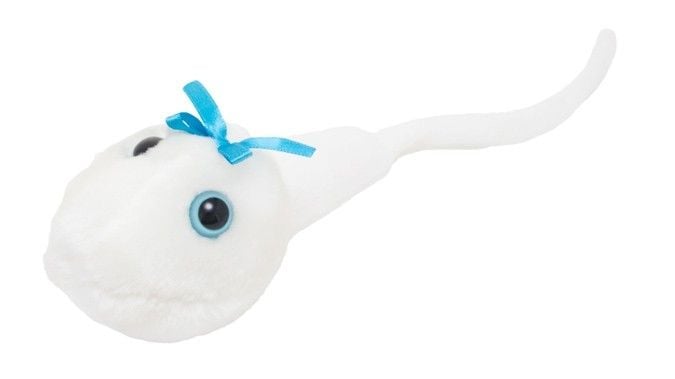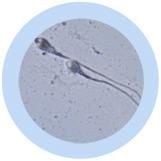Sperm Cell (Spermatozoon)
Product Details
Additional Information
| Sizes | Giantmicrobes are based on actual microbes, cells, organisms and other critters, only 1,000,000 times actual size! Gigantic (GG) 40-60cm XL (XL) 25-38cm Original (PD) 12-20cm Minis (MM) 5-10cm each Keychain (KC) 5-10cm with clip |
|---|---|
| Materials | Plush from all new materials. Stuffed with polyester fiber fill. Surface washable: sponge with water & soap, air dry. |
| Packaging | Each plush microbe includes a printed card with fun, educational and fascinating facts about the actual microbe or cell. |
| Safety | Every product meets or exceeds U.S. and European standards for safety. For ages 3 and up. |
All about Sperm Cell (Spermatozoon)
FACTS: Success may have a thousand fathers, but children have only one – and it is quite remarkable how they end up with him.
Sperm comes from the word “seed” in Greek, and the average man makes over 1,000 sperm per second! Of course, only one sperm will have the chance to fertilize a mother’s egg and pass along the father’s good looks and personality – so for every winner, there are countless also-rans who will never get the chance to be a dad.
But it’s no wonder the winner is so special. It takes about 100 days for each tiny sperm cell to become mature enough to fertilize an egg. And many sperm are reabsorbed by a man’s body before getting even the chance to try. Of the contenders that do get the opportunity, half lose their way blundering into the wrong fallopian tube!
But with the field narrowed, the competition becomes a fierce trial of speed versus stamina: sperm with the smaller Y-chromosome – which father boys – swim faster; sperm with the female X-chromosome live longer – up to 5 days inside a woman’s body.
Because an egg is only fertile for a day or so, in most instances, none of the sperm succeed. But every now and again, one beats the astronomical odds. A baby is conceived and begins to grow – and with a father who’s one in a million.
| Description | Sperm cells are male reproductive cells. They have a head, which is the body of the cell, and a tail, which is the flagellum that propels the cell. Because they need to be efficient, they contain lots of mitochondria for energy and a nucleus to deliver DNA. Once a sperm reaches the egg, the female reproductive cell, it makes a totipotent zygote, which will divide and eventually make up all of the cells in the body. |
|---|
| Name | Sperm comes from the Greek: Sperma=seed |
|---|
| Actual Size |
The tail is approximately 0.5mm, or 50 microns long, half the thickness of a sheet of paper. The head is about 5 microns long. Quantity: A man releases about 250 million sperm per ejaculation, but it varies. |
|---|
| System | Reproductive System |
|---|
| History | 1677: Antonie van Leeuwenhoek was the first to observe sperm in a microscope. |
|---|
| Fascinating Facts |
Flowers: In flowers, the sperm is in the pollen. Haploid: Sperm cells have 23 chromosomes- half the normal number of chromosomes in a human cell! In Culture:Delivery Man: a 2013 movie where Vince Vaughn stars as a man who donated sperm and fathered many children. Every Sperm is Sacred: a song from Monty Python’s The Meaning of Life |
|---|








